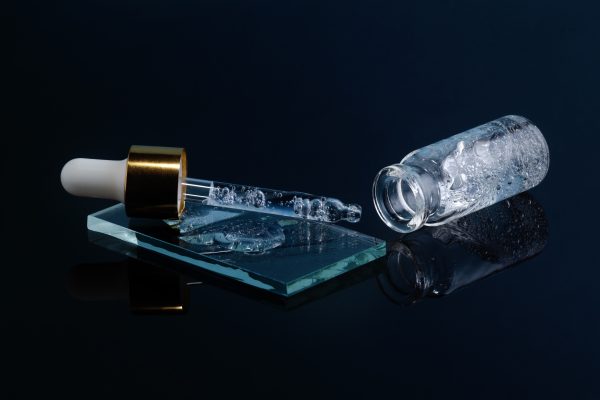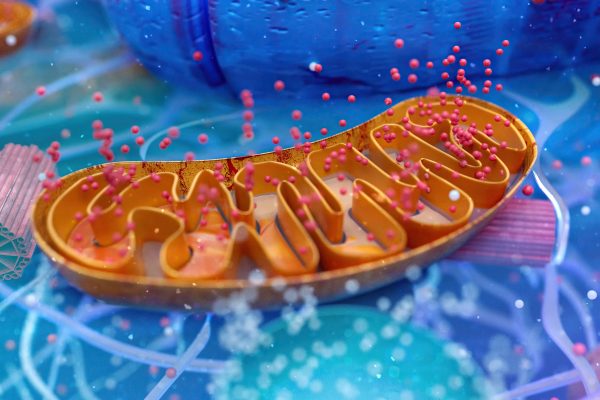What You Need To Know About Fluoride – 6 Critical Dangers and Risks of Fluoridated Water
The Dangers and Health Risks of Fluoride
Overview
Fluoride, a chemical commonly found in dental products and public water supplies, has been touted for its ability to prevent tooth decay. However,
What is Fluoride?
Fluoride is a naturally occurring mineral derived from fluorine, the 13th most abundant element in the Earth’s crust. It is found in soil, water, and various foods. Fluoride compounds are used in a variety of applications, including industrial processes, pharmaceuticals, and dental products even though they are considered toxic.
History of Water Fluoridation
The practice of water fluoridation, introduced to reduce dental caries, has a controversial history, particularly concerning the sources of fluoride used. Much of the fluoride added to drinking water originates from industrial byproducts of the phosphate fertilizer industry.
Early Discoveries and Industrial Interest
- Initial Observations
- In the early 20th century, it was thought that there were lower rates of dental caries in communities with high natural fluoride levels in drinking water. This led to the hypothesis that this toxin could help prevent tooth decay. To this day, it remains a hypothesis and has not been proven.
- Industry Involvement
- During the 1930s and 1940s, the U.S. aluminum industry faced significant challenges due to the environmental and health hazards posed by fluoride emissions from their plants. Seeking a solution, they supported research into the benefits of this toxin for dental health, hoping to repurpose this industrial toxic waste for water fluoridation.
The Rise of Phosphate Fertilizer Byproducts
- Phosphate Fertilizer Industry
- The production of phosphate fertilizers generates significant amounts of this toxin as a byproduct. Phosphate rock contains high levels of the toxin, which are released during the production process. To prevent atmospheric pollution, the fluoride gases are captured using wet scrubbers.
- Hydrofluorosilicic Acid
- Hydrofluorosilicic acid, a toxic waste product of phosphate fertilizer production, emerged as the primary compound used for water fluoridation. It is collected from the wet scrubbers and then processed and sold to municipalities for water fluoridation.
Implementation of Water Fluoridation
- Grand Rapids, Michigan
- In 1945, Grand Rapids, Michigan, became the first city to fluoridate its drinking water using sodium fluoride. The success of this initiative in reducing dental caries rates led to widespread adoption across the United States and other countries.
- Shift to Industrial Byproducts
- As the demand for this toxin increased, the use of hydrofluorosilicic acid, sodium fluorosilicate, and sodium fluoride, all derived from industrial byproducts, became prevalent. These compounds were significantly cheaper than pharmaceutical-grade option, making them attractive options for municipalities.
Controversies and Health Concerns
- Safety and Health Risks
- The use of industrial byproducts for water fluoridation has raised significant health concerns. These compounds often contain impurities and contaminants, including heavy metals and radioactive substances, which can pose additional health risks.
- Public Opposition
- Over the years, public opposition to water fluoridation has grown, fueled by concerns about the safety and ethics of using industrial waste products in drinking water. Critics argue that the long-term health effects of chronic fluoride exposure, especially from these sources, have not been adequately studied.
The history of water fluoridation is deeply intertwined with the industrial byproducts of the phosphate fertilizer industry. The adoption of hydrofluorosilicic acid and other compounds as fluoridating agents was driven by economic considerations and industrial interests, often at the expense of public health. There was, and still is, no concern about the impact of this toxic product on your health long term. As awareness of the potential risks associated with fluoride exposure grows, it is crucial to re-evaluate the safety and efficacy of using these industrial byproducts in public water systems.
Fluoridation from Fertilizer Byproduct and Toxicity

Fluoride from Fertilizer Byproducts
The toxic compounds used in water fluoridation, such as hydrofluorosilicic acid, sodium silicofluoride, and sodium fluoride, are often sourced from the waste products of the phosphate fertilizer industry. During the production of phosphate fertilizers, fluoride gases are captured in wet scrubbers to prevent atmospheric pollution. These captured fluorides are then processed and sold as additives for water fluoridation.
Industrial Origins
- Hydrofluorosilicic Acid (H2SiF6)
- Source: This compound is a byproduct of the production of phosphate fertilizers. It is collected from the wet scrubbing systems used to capture fluoride gases released during the processing of phosphate rock.
- Use: Hydrofluorosilicic acid is the most commonly used fluoridating agent in the United States.
- Sodium Fluorosilicate (Na2SiF6)
- Source: Similar to hydrofluorosilicic acid, sodium fluorosilicate is derived from the processing of phosphate fertilizers.
- Use: It is used in smaller quantities for water fluoridation and sometimes in the production of insecticides and ceramics.
- Sodium Fluoride (NaF)
- Source: Sodium fluoride can be produced by neutralizing hydrofluoric acid with sodium carbonate or sodium hydroxide. It is also a byproduct of various industrial processes.
- Use: Sodium fluoride was the original compound used in water fluoridation and is still used in some areas and dental products.
Toxicity of Fluoride
Fluorine compound is inherently toxic to the human body when consumed in excess. Here are some key reasons why it is considered toxic:
- Cellular Toxicity
- Mechanism: Fluoride ions can interfere with various cellular processes. They inhibit enzyme activity, alter protein synthesis, and disrupt cellular signaling pathways.
- Evidence: Studies have shown that this toxin can induce oxidative stress in cells, leading to cellular damage and apoptosis (programmed cell death). For example, the compound has been demonstrated to induce neurotoxicity in cultured neurons by promoting oxidative stress and mitochondrial dysfunction. Could it be that we have a lot of metabolic dysfunctions today because of overexposure this this toxin?
- Neurotoxicity
- Mechanism: This toxin can cross the blood-brain barrier and accumulate in brain tissue, potentially affecting neurological development and function.
- Evidence: Multiple studies have reported associations between fluoride exposure and reduced cognitive function. A landmark study published in “Environmental Health Perspectives” found a correlation between high fluoride exposure and lower IQ scores in children. Additionally, animal studies have shown that exposure to this toxin can lead to neurodegenerative changes in the brain.
- Endocrine Disruption
- Mechanism: Fluoride can interfere with the function of the thyroid gland and other endocrine organs.
- Evidence: Research indicates that exposure to this toxin may reduce thyroid hormone production by inhibiting the absorption of iodine, which is essential for thyroid function. A study in the “Journal of Epidemiology & Community Health” linked high levels in drinking water to an increased prevalence of hypothyroidism in adults.
- Skeletal Toxicity
- Mechanism: This toxic sludge can accumulate in bones over time, leading to skeletal fluorosis, a condition characterized by pain, stiffness, and joint problems.
- Evidence: Chronic exposure has been shown to increase bone density while simultaneously making bones more brittle and prone to fractures. A study published in the “Journal of Bone and Mineral Research” demonstrated an elevated risk of bone fractures in populations exposed to high levels of this toxin in drinking water.
- Carcinogenic Potential
- Mechanism: There is some evidence suggesting that this toxin may contribute to the development of certain cancers, particularly osteosarcoma (a type of bone cancer).
- Evidence: Research published in “Cancer Causes & Control” found an age-specific association between exposure and an increased risk of osteosarcoma in young males. While the evidence is not conclusive, it raises concerns about the long-term carcinogenic effects of this toxin.
The use of this toxin in water fluoridation, particularly from industrial byproducts of the phosphate fertilizer industry, poses significant health risks. Fluoride’s cellular toxicity, neurotoxicity, endocrine disruption, skeletal toxicity, and potential carcinogenic effects underscore the need for a critical reassessment of its use in public health initiatives. The growing body of scientific evidence calls for heightened awareness and precautionary measures to mitigate the adverse health effects associated with exposure.
Toxic Concentration of Hydrofluorosilicic Acid in Drinking Water
Hydrofluorosilicic acid (H₂SiF₆) is widely used for water fluoridation. However, the safety of its use has been a subject of debate due to its potential
Toxic Concentration of Hydrofluorosilicic Acid
- Regulatory Limits
- U.S. Environmental Protection Agency (EPA): The EPA has established a maximum contaminant level (MCL) for fluoride in drinking water at 4 parts per million (ppm) to prevent adverse health effects. The secondary maximum contaminant level (SMCL), which addresses cosmetic effects such as dental fluorosis, is set at 2 ppm.
- The EPA recommends a concentration of 0.7 parts per million (ppm) in drinking water for optimal dental health benefits while minimizing the risk of dental fluorosis. This standard applies regardless of its source, including hydrofluorosilicic acid.
- World Health Organization (WHO): The WHO guideline value for this toxin in drinking water is also set at 1.5 ppm to prevent dental fluorosis.
- Centers for Disease Control and Prevention (CDC): The CDC also supports the EPA’s recommendation of 0.7 ppm as the optimal level for preventing tooth decay. Again, there is so conclusive evidence that this toxin prevents tooth decay.
- Toxicity Thresholds
- Acute Toxicity: According to the National Research Council (NRC), acute toxicity can occur at concentrations as low as 3-5 ppm when ingested over a short period. Symptoms of acute toxicity include nausea, vomiting, and abdominal pain.
- Chronic Toxicity: Chronic exposure to concentrations above 1.5 ppm can lead to dental fluorosis, while concentrations above 4 ppm are associated with skeletal fluorosis and other serious health issues.
Health Effects at Toxic Concentrations
- Dental Fluorosis
- Concentration: Dental fluorosis can occur at fluoride concentrations above 1.5 ppm, particularly in children whose teeth are still developing.
- Symptoms: Mild dental fluorosis manifests as white spots on the teeth, while severe cases can lead to brown stains and enamel erosion.
- Skeletal Fluorosis
- Concentration: Chronic exposure to levels above 4 ppm can result in skeletal fluorosis.
- Symptoms: Skeletal fluorosis is characterized by pain and stiffness in the joints, as well as increased bone density and calcification of ligaments.
- Other Health Effects
- Neurotoxicity: Research indicates potential neurotoxic effects at concentrations as low as 1.5 ppm, with studies showing an association between high fluoride exposure and reduced IQ in children.
- Endocrine Disruption: Concentrations above 2 ppm have been linked to thyroid dysfunction, particularly hypothyroidism, due to interference with iodine uptake.
Typical Concentrations in Drinking Water
- Implementation of Hydrofluorosilicic Acid
- Typical Levels: When hydrofluorosilicic acid is added to drinking water, it is diluted to achieve the target concentration of 0.7 ppm fluoride. The exact amount of hydrofluorosilicic acid required depends on its initial concentration and the volume of water being treated.
- Calculation: To achieve 0.7 ppm fluoride, approximately 0.14 milligrams of hydrofluorosilicic acid is needed per liter of water, assuming the acid is about 23% by weight.
Health Concerns and Toxicity
- Potential Impurities
- Contaminants: Hydrofluorosilicic acid, as an industrial byproduct, may contain impurities such as heavy metals (e.g., lead, arsenic) and other hazardous substances. These contaminants raise concerns about additional health risks when the acid is used for water fluoridation.
- Safety Issues: The presence of these impurities, even in trace amounts, can pose long-term health risks, including neurological and developmental effects.
- Fluoride Toxicity
- Acute and Chronic Effects: While the target concentration is set to be safe, any overfeeding or malfunction in the fluoridation system can lead to higher levels, risking acute toxicity. Chronic exposure to slightly elevated levels can still contribute to dental and skeletal fluorosis, neurotoxicity, and endocrine disruption.
- Vulnerable Populations: Children, the elderly, and individuals with compromised health conditions are particularly vulnerable to the toxic effects of excessive exposure.
Case Studies and Incidents
- Overfeeds and Spills
- Incidents: There have been documented cases of fluoride overfeed where equipment failure or human error resulted in significantly higher concentrations of this toxin in drinking water. These incidents often lead to immediate health advisories and boil-water notices.
- Example: In 1992, an overfeeding in Hooper Bay, Alaska, caused fluoride levels to spike to over 150 ppm, resulting in numerous cases of fluoride poisoning, including nausea, vomiting, and abdominal pain among residents.
Hydrofluorosilicic acid, when used for water fluoridation, can pose significant health risks if concentrations exceed regulatory limits. Acute toxicity can occur at concentrations as low as 3-5 ppm, while chronic exposure to levels above 1.5 ppm can lead to dental and skeletal fluorosis, neurotoxicity, and endocrine disruption. It is essential to adhere to established guidelines to mitigate these risks and protect public health.
The concentration of hydrofluorosilicic acid in drinking water is regulated to achieve a level of 0.7 ppm, considered optimal for dental health. Despite regulatory measures, concerns persist regarding the potential impurities in hydrofluorosilicic acid and the risks associated with both acute and chronic fluoride toxicity. This is because any amount of this product is toxic to your health. Because it accumulates in your body, no amount can truly be considered safe. Vigilance in maintaining proper levels and addressing impurities or better yet, removing altogether from drinking water and dental products is crucial for ensuring public safety.
Dangers and Health Risks of Fluoride
Despite its initial acceptance, concerns about the safety of this toxin have persisted. Research has revealed several potential health risks associated with exposure to this toxin:
- Dental Fluorosis
- Definition: Dental fluorosis is a condition caused by excessive intake of this toxin during the early years of life when teeth are developing. It results in discoloration and mottling of the enamel.
- Evidence: Studies have shown that children in fluoridated areas have higher rates of dental fluorosis compared to those in non-fluoridated areas.
- Skeletal Fluorosis
- Definition: Skeletal fluorosis is a bone disease caused by excessive accumulation of this toxic sludge in the bones, leading to pain, stiffness, and joint problems.
- Evidence: High levels of fluoride intake over many years can lead to skeletal fluorosis, a condition more common in regions with naturally high levels.
- Thyroid Dysfunction
- Definition: The thyroid gland can be adversely affected by fluoride, potentially leading to hypothyroidism.
- Evidence: Research has indicated that exposure may lower thyroid function by inhibiting iodine absorption, which is critical for thyroid health.
- Neurological Effects
- Definition: Emerging research suggests that this toxin may have neurotoxic effects, particularly in children.
- Evidence: A significant study by Harvard researchers found that high exposure was associated with lower IQ scores in children. Additional studies have linked fluoride exposure to cognitive impairments and developmental delays.
- Bone Fractures
- Definition: Excessive intake of this toxin may increase the risk of bone fractures.
- Evidence: Epidemiological studies have shown an increased risk of fractures in populations with high fluoride levels in their drinking water, suggesting that fluoride may compromise bone strength and density.
- Potential Carcinogenic Effects
- Definition: Some studies have explored a possible link between exposure to this toxin and certain types of cancer, such as osteosarcoma.
- Evidence: Research has produced mixed results, but some studies suggest a potential association between exposure and an increased risk of bone cancer, warranting further investigation.
Symptoms of Fluoride Poisoning
Fluoride poisoning can occur from excessive exposure to fluoride through drinking water, dental products, or industrial sources. The severity of symptoms depends on the dose and duration of exposure.
Acute Fluoride Poisoning
- Mild to Moderate Exposure
- Gastrointestinal Symptoms: Nausea, vomiting, abdominal pain, and diarrhea are common initial symptoms following ingestion of levels above recommended amounts. These symptoms are typically the body’s response to high levels.
- Evidence: Studies report that acute ingestion of this toxin can cause gastrointestinal distress, even at relatively low concentrations above recommended limits.
- Severe Exposure
- Neurological Symptoms: Severe acute fluoride poisoning can result in headaches, dizziness, and convulsions. High doses can lead to more serious neurological symptoms due to systemic toxicity.
- Muscle Symptoms: Muscle spasms and tremors can occur as this toxin affects neuromuscular function.
- Evidence: Ingesting large amounts of fluoride, such as in cases of accidental overfeed in water fluoridation systems, has led to documented cases of severe symptoms including convulsions and severe gastrointestinal symptoms.
- Systemic Effects
- Hypocalcemia: This toxic sludge can interfere with calcium metabolism, leading to hypocalcemia (low blood calcium levels). Symptoms include muscle cramps, tetany (muscle spasms), and cardiac arrhythmias.
- Cardiovascular Symptoms: Severe cases may present with abnormal heart rhythms or even cardiac arrest in extreme poisoning scenarios.
Chronic Fluoride Poisoning
- Dental Fluorosis
- Symptoms: Chronic exposure to levels above 1.5 ppm can lead to dental fluorosis, characterized by discoloration of the teeth, ranging from white spots to brown stains. Severe cases may involve pitting and erosion of the enamel.
- Evidence: Long-term consumption of this toxin, even at levels below 4 ppm, can result in varying degrees of dental fluorosis, as documented in multiple epidemiological studies.
- Skeletal Fluorosis
- Symptoms: Chronic exposure at levels above 4 ppm can lead to skeletal fluorosis, manifesting as joint pain, stiffness, and changes in bone density. Advanced cases may cause deformities and impaired joint function.
- Evidence: Prolonged exposure to high concentrations has been shown to cause significant skeletal changes and pain, supported by historical studies of communities with high natural fluoride levels in water.
- Neurological Effects
- Symptoms: Chronic high fluoride exposure has been associated with potential neurotoxic effects, including reduced IQ levels in children and behavioral changes. This is linked to long-term ingestion of fluoride from drinking water with elevated concentrations.
- Evidence: Recent studies have suggested that long-term fluoride exposure might impact cognitive development, with research indicating lower IQ scores in children exposed to higher levels.
Fluoride poisoning presents a range of symptoms depending on the severity of exposure. Acute poisoning typically involves gastrointestinal and neurological symptoms, while chronic exposure can lead to dental and skeletal fluorosis, along with potential neurological effects. Understanding these symptoms is crucial for recognizing and addressing fluoride toxicity.
Natural Detoxification from Fluoride
Detoxifying from fluoride, especially after chronic exposure, involves natural strategies aimed at reducing the toxic levels in the body and alleviating related
- Increase Water Intake
- Mechanism: Drinking ample water helps to flush out toxins, including fluoride, from the body through increased urination.
- Recommendations: Aim for at least 8-10 glasses of purified water daily to support detoxification processes. Of course, make sure the water you drink is not fluoridated water.
- Eat a Balanced Diet Rich in Antioxidants
- Mechanism: Antioxidants help to neutralize free radicals and reduce oxidative stress caused by fluoride toxicity.
- Foods to Include: Incorporate fruits and vegetables high in antioxidants such as berries, leafy greens, and cruciferous vegetables.
- Increase Fiber Intake
- Mechanism: Fiber binds to toxins in the digestive tract and facilitates their excretion from the body.
- Foods to Include: Foods high in dietary fiber such as whole grains, legumes, fruits, and vegetables are beneficial.
- Use Detoxifying Herbs and Supplements
- Chlorella and Spirulina
- Mechanism: These algae are known for their ability to bind to toxins and support their elimination from the body.
- Dosage: Typically recommended in supplement form, following product instructions. You can consider and try this Phytoplankton product from Activation Products. I highly recommend it.
- Turmeric
- Mechanism: Curcumin, the active compound in turmeric, has anti-inflammatory and detoxifying properties.
- Dosage: Incorporate turmeric into the diet or use supplements as recommended. This should be a staple in your diet.
- Activated Charcoal
- Mechanism: Activated charcoal can adsorb toxins in the gastrointestinal tract and prevent their absorption.
- Dosage: Typically used in emergencies; consult a healthcare provider for appropriate use.
- Support Kidney and Liver Function
- Mechanism: The kidneys and liver play crucial roles in detoxifying and eliminating fluoride from the body.
- Strategies: Consume foods that support liver and kidney health, such as dandelion root, milk thistle, and plenty of water.
- Avoid Fluoride Exposure
- Mechanism: Reducing further fluoride exposure helps to lower the body’s fluoride levels.
- Strategies: Use fluoride-free dental products, drink filtered water, and avoid processed foods that may contain fluoride.
- Consider Chelation Therapy
- Mechanism: Chelation therapy involves the use of chelating agents to bind and remove heavy metals and toxins from the body.
- Natural Chelators: EDTA and cilantro are examples of natural chelating agents that may help with detoxification
Detoxifying from fluoride naturally involves increasing water intake, consuming a balanced diet rich in antioxidants and fiber, and using detoxifying herbs and supplements. Supporting liver and kidney function and avoiding further fluoride exposure are also crucial steps. These methods can help to mitigate the effects of fluoride toxicity and support overall health.
How to Remove Fluoride from Your Water
Given the potential health risks associated with fluoride exposure, many people seek effective methods to remove fluoride from their drinking water. In my household, we use a whole house Bone Char Carbon and Activated Charcoal Carbon filters. I highly recommend filtering your water either at the point of use or the whole house filtration method.
- Reverse Osmosis (RO)
- Mechanism: Reverse osmosis systems use a semipermeable membrane to remove contaminants, including fluoride, from water. Water is forced through the membrane, leaving fluoride and other impurities behind.
- Effectiveness: RO systems can remove up to 95-99% of fluoride from water.
- Considerations: These systems can be expensive and require regular maintenance and filter replacement. However, if you consider the cost of poor health because of toxic fluoride, it is well worth it.
- Activated Alumina
- Mechanism: Activated alumina is a type of aluminum oxide that adsorbs fluoride ions from water as it passes through the material.
- Effectiveness: It can remove 90-95% of fluoride when used correctly.
- Considerations: Activated alumina filters need periodic regeneration or replacement and work best at specific pH levels.
- Distillation
- Mechanism: Distillation involves boiling water to produce steam, which is then condensed back into liquid form, leaving fluoride and other contaminants behind.
- Effectiveness: This method effectively removes almost all this toxin from water.
- Considerations: Distillation units can be energy-intensive and may not be practical for large-scale water purification.
- Bone Char Carbon
- Mechanism: Bone char carbon is made from the charred bones of animals and has a high affinity for fluoride ions. The fluoride binds to the surface of the bone char as water passes through.
- Effectiveness: Can remove up to 90% of fluoride.
- Considerations: It requires regular replacement and can introduce calcium and phosphate into the water.
- Anion Exchange Filters
- Mechanism: Anion exchange filters use resins that exchange fluoride ions in the water with other ions, such as chloride or hydroxide.
- Effectiveness: These filters can effectively reduce this toxin levels, but their efficiency depends on the specific resin used and water composition.
- Considerations: Requires regular maintenance and resin replacement.
- Water Filters with Special Media
- Activated Carbon Filters: Standard activated carbon filters are not effective for fluoride removal. However, some advanced activated carbon filters are specially designed to remove this toxin when combined with other filtration technologies.
Removing this toxin from drinking water can be achieved through various methods, each with its own advantages and limitations. Reverse osmosis, activated alumina, distillation, bone char carbon, and anion exchange filters are among the most effective techniques. Choosing the right method depends on factors such as the specific fluoride concentration in your water, budget, and maintenance capabilities. Ensuring clean and safe drinking water requires careful consideration of these options and regular monitoring of water quality.
After Thought
The dangers and health risks of fluoride are evident across various forms of exposure, from water fluoridation to dental products. The use of hydrofluorosilicic acid, a byproduct of the phosphate fertilizer industry, raises significant concerns due to the potential contamination with hazardous impurities. Fluoride is stored primarily in bone and soft tissues with transient amounts in blood plasma and has adverse effects manifesting in both acute and chronic forms of poisoning. Symptoms range from gastrointestinal distress and neurological impairment in acute cases to dental and skeletal fluorosis, as well as potential neurotoxicity in chronic exposure scenarios.
Detoxification from this toxin can be approached naturally through increased filtered water intake, a balanced diet rich in antioxidants and fiber, and the use of detoxifying herbs and supplements. However, the most effective strategy remains the prevention of excessive fluoride exposure by choosing fluoride-free products and ensuring water sources are free from industrial contaminants. The cumulative evidence underscores the need for caution and further scrutiny of fluoride use in public health measures to mitigate its toxic effects. For the sake of your and your family’s health, PLEASE, FILTER YOUR WATER!
Start incorporating Oceans Alive Phytoplankton from Activation Products into your diet today to help start enjoying its detoxing health benefits and experience a revitalized Optimal Health.
For natural and healing remedies, products, and supplements to help you live your most optimal healthy life, visit our store here!
Remember: Own Your Health!
I am being HEAVILY censored on Facebook, google, and even X (formerly Twitter). Please help me spread this life saving information.
If you enjoyed the information presented in this article, Please Share It. Help us reach more people and keep this website going! Thank you in advance!
Note: The information provided in this article is for educational purposes only and should not be considered medical advice. Please consult with a healthcare professional or registered dietitian before making any significant changes to your diet or lifestyle.
References
- DenBesten, P., & Li, W. (2011). Chronic fluoride toxicity: dental fluorosis. Monographs in Oral Science, 22, 81-96.
- Hong, L., Levy, S. M., Warren, J. J., Broffitt, B., & Cavanaugh, J. E. (2006). Fluoride intake levels in relation to fluorosis development in permanent maxillary central incisors and first molars. Caries Research, 40(6), 494-500.
- Boivin, G., Chavassieux, P., Chapuy, M. C., Baud, C. A., & Meunier, P. J. (1990). Skeletal fluorosis: histomorphometric analysis of bone changes and bone fluoride content in 29 patients. Bone, 11(6), 321-327.
- Khandare, A. L., Harikumar, R., & Sivakumar, B. (2005). Risk factors for endemic skeletal fluorosis. Fluoride, 38(1), 65-71.
- Michael, M., & Rama, R. (2000). Effects of fluoride on thyroid gland. Fluoride, 33(2), 52-56.
- Peckham, S., Lowery, D., & Spencer, S. (2015). Are fluoride levels in drinking water associated with hypothyroidism prevalence in England? A large observational study of GP practice data and fluoride levels in drinking water. Journal of Epidemiology & Community Health, 69(7), 619-624.
- Grandjean, P., & Landrigan, P. J. (2014). Neurobehavioural effects of developmental toxicity. The Lancet Neurology, 13(3), 330-338.
- Choi, A. L., Sun, G., Zhang, Y., & Grandjean, P. (2012). Developmental fluoride neurotoxicity: a systematic review and meta-analysis. Environmental Health Perspectives, 120(10), 1362-1368.
- Li, Y., Liang, C., Slemenda, C. W., Ji, R., Sun, S., Cao, J., & Johnston Jr, C. C. (2001). Effect of long-term exposure to fluoride in drinking water on risks of bone fractures. Journal of Bone and Mineral Research, 16(5), 932-939.
- Alarcón-Herrera, M. T., Martín-Domínguez, I. R., Trejo-Vázquez, R., & Rodríguez-Dozal, S. (2001). Well water fluoride, dental fluorosis, bone fractures in the Guadiana Valley of Mexico. Fluoride, 34(2), 139-149.
- Bassin, E. B., Wypij, D., Davis, R. B., & Mittleman, M. A. (2006). Age-specific fluoride exposure in drinking water and osteosarcoma (United States). Cancer Causes & Control, 17(4), 421-428.
- Kim, F. M., Hayes, C., Williams, P. L., Whitford, G. M., Joshipura, K. J., Hoover, R. N., & Douglass, C. W. (2011). An assessment of bone fluoride and osteosarcoma. Journal of Dental Research, 90(10), 1171-1176.
- Pereira, M., Dombrowski, P., Losso, E. M., Chioca, L. R., Da Cunha, C., & Andreatini, R. (2011). Effects of sodium fluoride on oxidative stress and acetylcholinesterase activity in rats. Environmental Toxicology and Pharmacology, 32(1), 80-87.
- Mullenix, P. J., Denbesten, P. K., Schunior, A., & Kernan, W. J. (1995). Neurotoxicity of sodium fluoride in rats. Neurotoxicology and Teratology, 17(2), 169-177.
- Bryson, C. (2004). The Fluoride Deception. Seven Stories Press.
- Connett, P., Beck, J., & Micklem, H. S. (2010). The Case Against Fluoride: How Hazardous Waste Ended Up in Our Drinking Water and the Bad Science and Powerful Politics That Keep It There. Chelsea Green Publishing.
- Masters, R. D., & Coplan, M. J. (1999). Water treatment with silicofluorides and lead toxicity. International Journal of Environmental Studies, 56(4), 435-449.
- Carton, R. J. (1996). Review of the 2006 United States National Research Council report: Fluoride in drinking water. Fluoride, 39(3), 163-172.
- Hileman, B. (1988). Fluoridation of Water: Questions about Health Risks and Benefits Remain after More than 40 Years. Chemical & Engineering News, 66(31), 26-42.
- U.S. Environmental Protection Agency (EPA). (2011). Fluoride: Relative Source Contribution Analysis.
- National Research Council (NRC). (2006). Fluoride in Drinking Water: A Scientific Review of EPA’s Standards. National Academies Press.
- World Health Organization (WHO). (2006). Fluoride in Drinking-water. Background document for development of WHO Guidelines for Drinking-water Quality.
- Whitford, G. M. (1990). The physiological and toxicological characteristics of fluoride. Journal of Dental Research, 69(Spec Iss), 539-549.
- Centers for Disease Control and Prevention (CDC). (2015). Community Water Fluoridation. Retrieved from CDC.gov.
- Mascarenhas, A. K. (2000). Risk factors for dental fluorosis: a review of the recent literature. Pediatric Dentistry, 22(4), 269-277.
- Pizzorno, J. E., & Murray, M. T. (2012). Textbook of Natural Medicine. Elsevier.
- Lee, Y. S., & Kim, K. W. (2015). Antioxidants in Foods and Their Health Benefits. CRC Press.
- Slavin, J. L. (2013). Dietary fiber and body weight. Nutrition, 28(4), 279-284.
- Kedia, A., & Thakur, K. (2021). Chlorella and Spirulina in Detoxification and Immune Support. Springer.
- Gupta, S. C., et al. (2013). Curcumin: The Indian Solid Gold. Springer.
- Weisburger, J. H. (2001). Activated Charcoal: A Remedy for Poisoning. CRC Press.
- Valliant, J. C., & Shek, D. (2016). Liver and Kidney Health: Nutritional Support for Detoxification. Academic Press.
- Connett, P., Beck, J., & Micklem, H. S. (2010). The Case Against Fluoride: How Hazardous Waste Ended Up in Our Drinking Water and the Bad Science and Powerful Politics That Keep It There. Chelsea Green Publishing.
- Goyer, R. A. (1997). Toxic Effects of Metals. In C.D. Klaassen, M.O. Amdur, and J. Doull (Eds.), Casarett & Doull’s Toxicology: The Basic Science of Poisons. McGraw-Hill.
- Darvish, A., & Hashemi, S. R. (2018). A comprehensive review of techniques for removing fluoride from drinking water. Journal of Environmental Health Science and Engineering, 16(1), 1-13.
- Saha, S. (1993). Treatment of aqueous effluent for fluoride removal. Water Research, 27(8), 1347-1350.
- Pontius, F. W. (1991). Distillation for home water treatment. Journal of the American Water Works Association, 83(8), 26-30.
- Zhang, Y., et al. (2009). Removal of fluoride from drinking water by bone char: A review. Separation and Purification Technology, 70(1), 1-9.
- Gupta, A. K., & Chaudhary, N. (1995). Anion exchange process for fluoride removal from water. Water Research, 29(11), 2489-2494.
- Clarke, E. G. C., et al. (1970). Activated carbon adsorption of fluorides. Journal of Environmental Engineering, 96(5), 989-1005
Featured Image Credit:Image by freepik; Image by freepik



























0 Comment